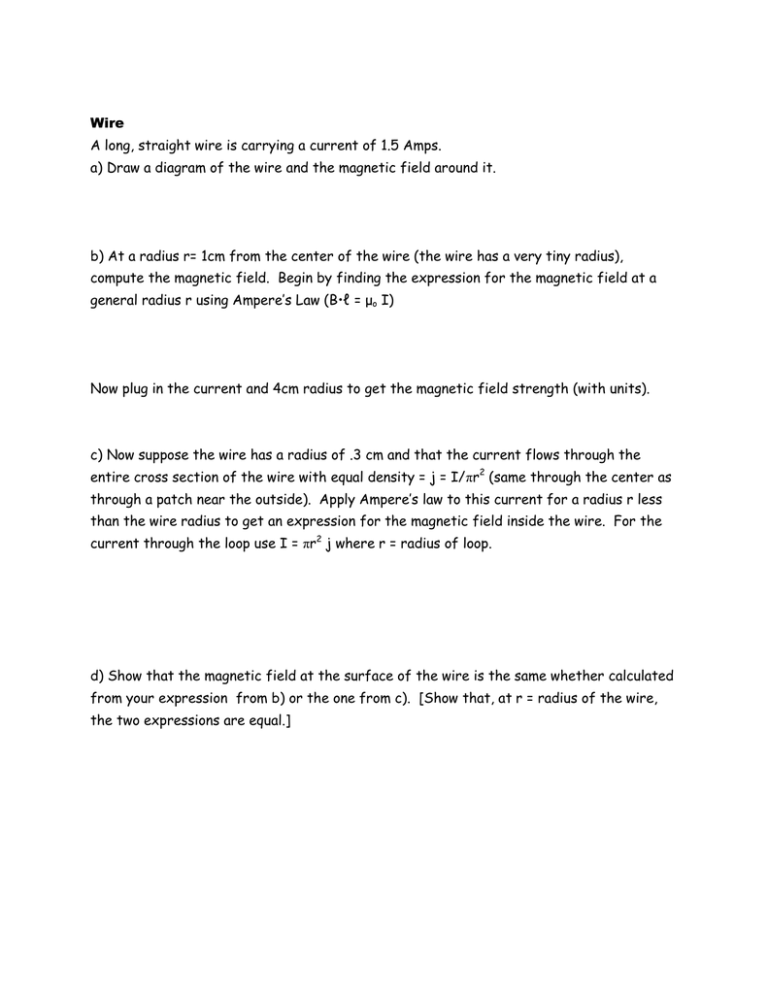Magnetic Fields
advertisement

Wire A long, straight wire is carrying a current of 1.5 Amps. a) Draw a diagram of the wire and the magnetic field around it. b) At a radius r= 1cm from the center of the wire (the wire has a very tiny radius), compute the magnetic field. Begin by finding the expression for the magnetic field at a general radius r using Ampere’s Law (B•ℓ = μo I) Now plug in the current and 4cm radius to get the magnetic field strength (with units). c) Now suppose the wire has a radius of .3 cm and that the current flows through the entire cross section of the wire with equal density = j = I/πr2 (same through the center as through a patch near the outside). Apply Ampere’s law to this current for a radius r less than the wire radius to get an expression for the magnetic field inside the wire. For the current through the loop use I = πr2 j where r = radius of loop. d) Show that the magnetic field at the surface of the wire is the same whether calculated from your expression from b) or the one from c). [Show that, at r = radius of the wire, the two expressions are equal.] Toroid A toroid with R = 2cm (diagram) has 100 turns. Calculate the magnetic field at R = 2cm if a current of 0.2 A flows through the wire. Solenoid Using the same current as in the toroid problem, determine how many turns per centimeter you would need for the magnetic field in the solenoid to equal the magnetic field calculated above for the center of the toroid. Set up the problem algebraically first and cancel all the variables in common. Given your result, what advantages are there to using a solenoid to produce a magnetic field? What advantages does a toroid offer? Force Two particles, a proton and an electron enter a uniform magnetic field of 2 Tesla. Both are moving at a velocity of 1.0 x 105 m/s perpendicular to the field lines. a) Calculate the radius of the resulting paths for both particles in the magnetic field and sketch the paths on the diagram below. The circles indicate the magnetic field is toward you out of the page and the velocity direction is shown. b) Remembering that the force on a charge in an electric field is F = qE, What strength of electric field would be needed to cancel the Lorentz force on the moving electron? In what direction should such a uniform electric field be pointing? c) Suppose that a proton enters the magnetic field above at an angle of 60° from the magnetic field at a velocity of 3000 m/s. Describe the trajectory of the particle and determine the radius of its circular path about the field lines.




